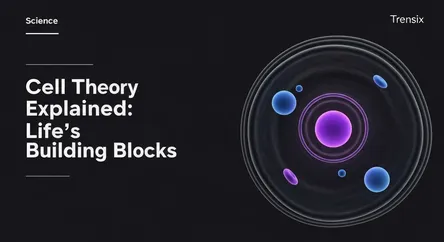Science
Cell Theory Explained: Life's Building Blocks

Explore the fundamental principles of cell theory, the cornerstone of modern biology that defines the basic unit of all known living organisms.
What is it?
Cell theory is a foundational principle in biology, universally accepted by scientists. It consists of three core tenets: all living organisms are composed of one or more cells, the cell is the basic unit of structure and organization in organisms, and all cells arise from pre-existing cells. This theory was developed over centuries, with crucial contributions in the 19th century from botanist Matthias Schleiden, zoologist Theodor Schwann, and physician Rudolf Virchow. They collectively established that whether it's a tiny bacterium or a giant whale, life is fundamentally cellular. It provides a framework for understanding how organisms grow, reproduce, and function.
Why is it trending?
While an established concept, cell theory remains perpetually relevant and trends in educational and scientific contexts. It's a cornerstone of biology curricula worldwide, constantly searched by students. Furthermore, modern medical breakthroughs continually highlight its importance. Advances in fields like stem cell research, gene editing (CRISPR), and personalized medicine are all built upon our understanding of cellular function, keeping the principles of cell theory in the scientific spotlight and public discourse.
How does it affect people?
Cell theory's impact on daily life is profound, particularly in health and medicine. Understanding that diseases often begin at the cellular level has led to effective treatments for infections, cancer, and genetic disorders. Vaccines work by interacting with our body's cells to build immunity. Knowledge of cellular processes allows for the development of drugs that target specific cellular malfunctions. Essentially, every aspect of modern medicine, from diagnosing illnesses with blood tests to developing new therapies, is rooted in the fundamental principles outlined by cell theory.